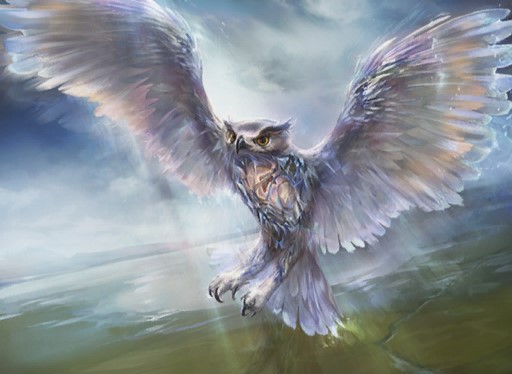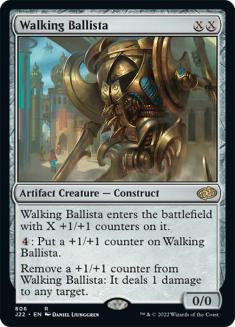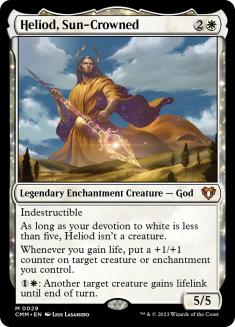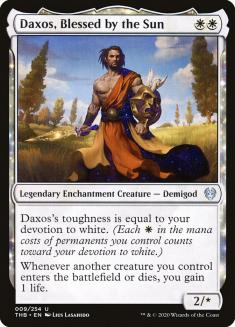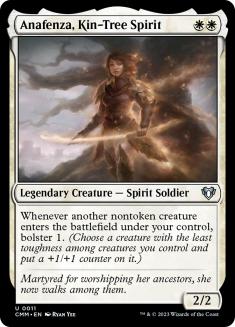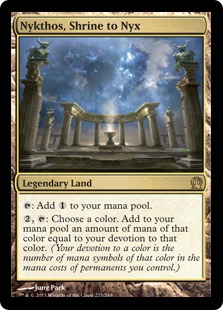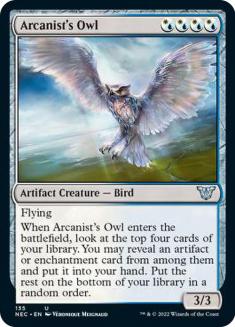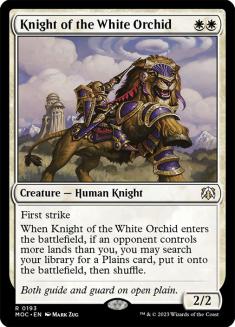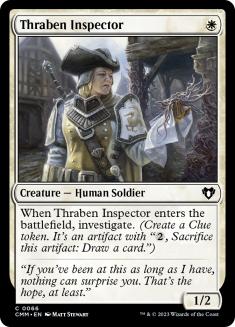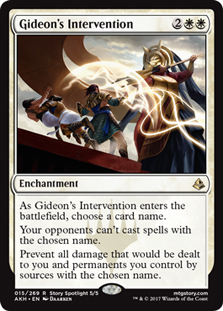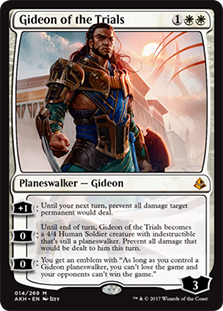So Wizards of the Coast (WotC) didn’t end up banning Inverter of Truth. They didn’t ban Dig Through Time. They chose to let Pioneer work itself out for another few months, and see if the metagame self-corrects or if something rises to the top and cements itself there.
Of course, this hands-off approach immediately left many Pioneer players rubbing their hands, excited at the thought of playing more with their virtual Splinter Twin decks while the rest of the format played something two steps behind. And yes, Dimir Inverter is the most-played deck in Pioneer right now, as it well should be. But another archetype has been making waves without stirring up massive public outcry. And it’s not what people expected just a month ago. In fact, despite the performance of Lotus Breach at Players Tour Phoenix earlier this year, it’s fallen far down the list of playable decks as well.
It’s the deck that people first thought was going to perform in Pioneer when Theros Beyond Death was released. Mono-White Devotion is back in a big way and it’s time to examine its place in the format, figure out what makes it tick, and see if it has what it takes to be a contender going forward.
The best list to analyze for an understanding of why and how Mono-White Devotion wins is the following:
Creatures (24)
- 4 Knight of the White Orchid
- 2 Anafenza, Kin-Tree Spirit
- 4 Thraben Inspector
- 4 Walking Ballista
- 4 Arcanist's Owl
- 2 Daxos, Blessed by the Sun
- 4 Heliod, Sun-Crowned
Planeswalkers (3)
Lands (25)
Spells (8)

Carlos Alexandre, or _Batutinha_ online, played this beauty to a solid finish in a Pioneer PTQ on Magic Online this weekend, smashing opponents left and right with a three-pronged approach as well as multiple powerful single cards that can individually swing games. It’s instructional to break down exactly what’s so great about this archetype, as it’s certain that he had to beat Dimir Inverter among other powerful and varied decks in order to secure his finish. It doesn’t look like much, but two copies finished deep in the tournament, so it’s well worth looking at, even if you don’t intend on playing it any time soon.
Prong 1: The Combo
First and foremost, this deck threatens a two-card combo, just like Dimir Inverter. Where Inverter of Truth combines with Thassa’s Oracle or Jace, Wielder of Mysteries to instantly win, Mono-White Devotion is powered by Walking Ballista and Heliod, Sun-Crowned. We’ve been aware of this combo for some time now. Heliod grants a 2/2 (or larger) Ballista lifelink, and then the Ballista starts shooting down the opponent one point at a time. Two cards, both of which are reasonably powerful mana sinks on their own, and together they win the game on the spot: what’s not to love?
For most opponents, this is concern number one. They’ll often have to hold up mana to ensure that the Mono-White Devotion player can’t simply cast a Walking Ballista, give it lifelink, and win on the spot. This gives up a noticeable amount of false tempo every turn, and we all know how valuable that abstract resource can be when multiplied over the course of a game.
Now, the combo does require a third piece to execute fully on Turn 4. Either Daxos, Hero of Meletis or Anafenza, Kin-Tree Spirit will do the trick, but there isn’t enough time and mana to get a 2/2 Walking Ballista and a Heliod and two extra mana to activate Heliod on Turn 4. (Of course, if the opponent has no removal and no blockers, you could in theory run out a Turn 2 Ballista followed by a Turn 3 Heliod, and then activate the Heliod on Turn 4 and attack with the Ballista to get it up to a 2/2 and proceed to combo.)
Generally speaking, though, the Anafenza and Daxos are just there for synergistic value, multiple pips of white mana in their mana costs, and the potential to offer a speedier combo when tight on mana. They aren’t necessary for this two-card combo to run.
And to reiterate, these cards, while being important combo pieces, are also great mana sinks. Mana sinks, of course, are known for being extremely useful alongside another pillar of the Mono-White Devotion deck.
Prong 2: Nykthos, Shrine to Nyx
Nykthos is the most powerful land in Pioneer. More powerful than Lotus Field and Thespian’s Stage (which are only really good because Underworld Breach broke the rules of the game), Nykthos offers the possibility of generating ten or more mana off a single card, letting its controller go wild and cast every spell in their hand. The sidekick to big Nykthos in this deck, of course, is the hardworking and underrated Arcanist’s Owl. Yes, it finds both halves of the combo, but it also adds four points of devotion to a Nykthos activation.
Essentially, it’s not a problem for a deck like this to play slightly below-the-curve cards like the Owl, Stasis Snare, and Gideon’s Intervention if it means that Nykthos ends the game by pumping out giant Walking Ballistas, giving the whole team lifelink in concert with Heliod, and generating tokens with Castle Ardenvale.
Every turn with Mono-White Devotion, you’re looking to snowball a battlefield above what your opponent can tamp down with removal spells. If you can get a couple of creatures and a Stasis Snare to stick, you know that in time that Nykthos will rocket your development way past your opponent and bring home the win.
After all, once you have plenty of mana, a Walking Ballista with a Heliod, Sun-Crowned becomes lethal no matter how many removal spells an opponent has. You can just keep activating their abilities in response to any removal spell and kill the opponent with their interaction on the stack.
Prong 3: Beatdown and Value
The card that best exemplifies this is Knight of the White Orchid. A 2/2 with first strike is certainly not knocking any doors off their hinges with raw power, but the value in catching up and flipping the script by being a two-mana Wood Elves on the draw is incredible. Additionally, it’s two juicy points of white devotion, and it does add to a jury-rigged beatdown deck that can drag an opponent across the finish line.
(Aside: I absolutely love the way Knight of the White Orchid reduces the impact of losing the die roll to start the match. I wish WotC would print more cards of a similar power level with similar mechanics. More Gemstone Caverns. More Tithe. Anything to give white a truly powerful mechanic it can call its own. This is unexplored design space, and it would certainly upend traditional game decision heuristics, such as always choosing to play first.)
Knight of the White Orchid is in a class by itself, but there’s also Thraben Inspector, essentially offering a similar deal. It’s not bringing a lot of beatdown in a shrimpy 1/2 body, but it’s free devotion and an Elvish Visionary rolled into one. It’s the best thing for a white deck to be doing on the first turn. All of these little creatures play well with more combo-adjacent pieces like Anafenza, which turn them into respectable attackers.
Then with Arcanist’s Owl, you get a whole mess of devotion, a quick peek down for more gasoline, and yes, a 3/3 flying body to nickel-and-dime the opponent into submission. Alongside Elspeth Conquers Death, you’re looking at a nice little one-two punch of value off a single Owl!
So yes, you’re essentially jabbing at your opponent with two-for-one creatures while they hold up mana and play scared of the combo. You might drop a Heliod and start beefing up these random assorted medium bodies, but for the most part few opponents are going to submit solely to your clown car of attackers. So what pushes this over the top?
Clearly, the threat of a combo, alongside the mana advantage inherent in a Nykthos deck, with a hint of normal aggression inherent in a deck full of assorted small white creatures would be enough to put Mono-White Devotion on the map of playable Pioneer decks. And with a little fine-tuning, it might even be a major player. But white’s special ability in Magic is, for better or for worse, hate cards. That means ways to slow down or impede the opponent. There are more generic options available in Pioneer (looking at you, Thalia, Heretic Cathar!) but decks like this are the best when their suppression effects are targeted specifically to pinpoint weaknesses in opposing strategies and hammer them to induce a massive win percentage swing. Single-card home runs are rare and often fleeting (because the deck you target can often adjust to be less weak to the hate you bring) but while they work, they make your expected win rate go through the roof.
Individual GG-Inducers
Here’s a hint: They all have Gideon in the name.
Gideon’s Intervention and Gideon of the Trials are both notoriously hard to remove for Dimir Inverter. They also both do something very important in the matchup. They make it nearly impossible for Dimir Inverter to win. Obviously Gideon’s Intervention can simply name “Inverter of Truth” and in most Game 1 scenarios, it’s going to be basically impossible for Dimir Inverter to beat that. In theory, they can discard or counter the Intervention, but the fact that an “I win” button exists is quite useful.
In addition, Gideon of the Trials crushes Dimir Inverter, and it’s good to see three copies here. With Gideon of the Trials and his emblem sticking around, Dimir Inverter needs to draw one of a scant one or two copies of Hero’s Downfall, or complete the Herculean task of assembling two Inverters in order to attack down the Gideon.
Now, getting two Inverters going is no easy feat. A player might have a couple of turns after they slam the first Inverter to get the second one down, and then they need to protect both of them from Stasis Snare and Elspeth Conquers Death, and then they still need to attack down the Gideon before decking out! It’s not an easy setup, not by a longshot. The combination of five of these hard-to-answer hate pieces is supremely tough for Dimir Inverter to beat, and that level of free win equity is always welcome in a metagame revolving around one central enemy deck.
White Is Back!
Isn’t it amazing how Theros Beyond Death gave us a full three new broken combos in Pioneer? Dimir Inverter, Lotus Breach, and now the fully evolved Mono-White Devotion all rely on key additions from the new set to flip the format upside-down. It’s a near-certainty that at this rate, Ikoria: Lair of Behemoths is going to do something else impressive to shake up Pioneer, but for now it’s a great source of joy to watch how combo-control, combo-midrange, and combo-combo all got juiced up and jockeyed for position over the course of this Pioneer format.
Unassuming value creatures, hateful hard-to-answer permanents, a peerless mana engine, and a threatening combo. That’s all it took to bring white back up to the same level as the other colors in Pioneer. Now that Mono-White Devotion has struck a decisive blow against Dimir Inverter, we get to watch for the next move from Dimir Inverter to twist out of the Gideon chokehold.
That being said, we’ll probably just get something ban-worthy in the next set and start the whole cycle over again!

